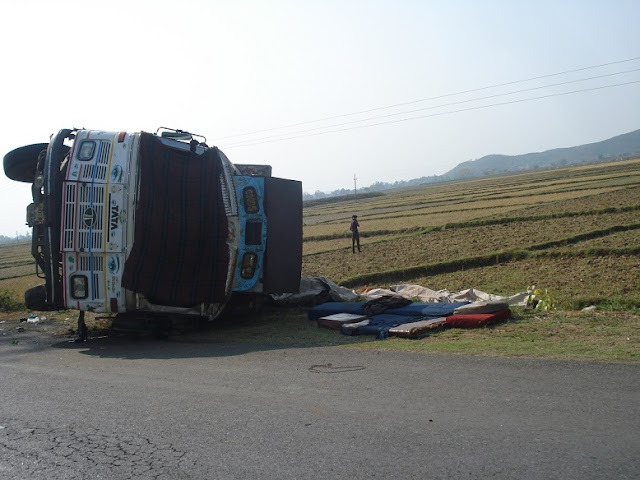Whenever we
talk about Pallitative Care, the 2 groups of patients who come to our picture
are those who suffer from stage 4 malignancies or hiv-aids. At NJH, we’ve
another group who comes to us
for end-of-life care.
Last week,
we had one such patient.
Mr. GD
suffered from severe breathlessness and he could not maintain his saturation to
even 80% on room air. He looked quite familiar to me. Later, I remembered. He
had come to us more than an year back. We had diagnosed him to have severe
bronchiectasis secondary to tuberculosis.
He had
already taken Anti-Tuberculosis medicines twice.
The family
had already spent quite a lot of money for his treatment when I saw them last year. They were planning to sell
their land and do further treatment.
And now,
when I saw him last month, the family had already sold their land and spend about 400,000 INR
over the last year. They had hardly any money with them.
On
examination, in addition to the bad lungs, he also had a very bad right heart failure, severe ascites, secondary bacterial
infection in his lung. He responded to antibiotics to a certain extent.
His
dependency on oxygen decreased from 5-6 litres per minute to half a litre per
minute over the first 3 days of admission. But, he remained sick. He started to
have evening rise of temperature.
To our
surprise, his ascitic fluid examination showed that he had tuberculous
peritonitis.
There was
no way that his family was going to take him elsewhere for further treatment. After selling
all their land, the only thing left was their house.
GD pulled
on for about 3 weeks. He always needed at least half litre of oxygen.
Ultimately, his heart gave up and he died.
The issue
was his bill. We had already told the family that he would not live for long.
And whatever we did was to ensure that he lived without pain. And it was
expensive. The total bill came to 61,000 INR. I was sure that the family did
not even have money for food.
There were
phone calls from quite a number of people. And one of the mukhiyas came.
Everyone wanted to take responsibility for our writing off the bill.
Of course,
it is tough. We are yet to have a formal palliative program. I wonder if it is
time that we request people to support us in helping out with such patients.




































